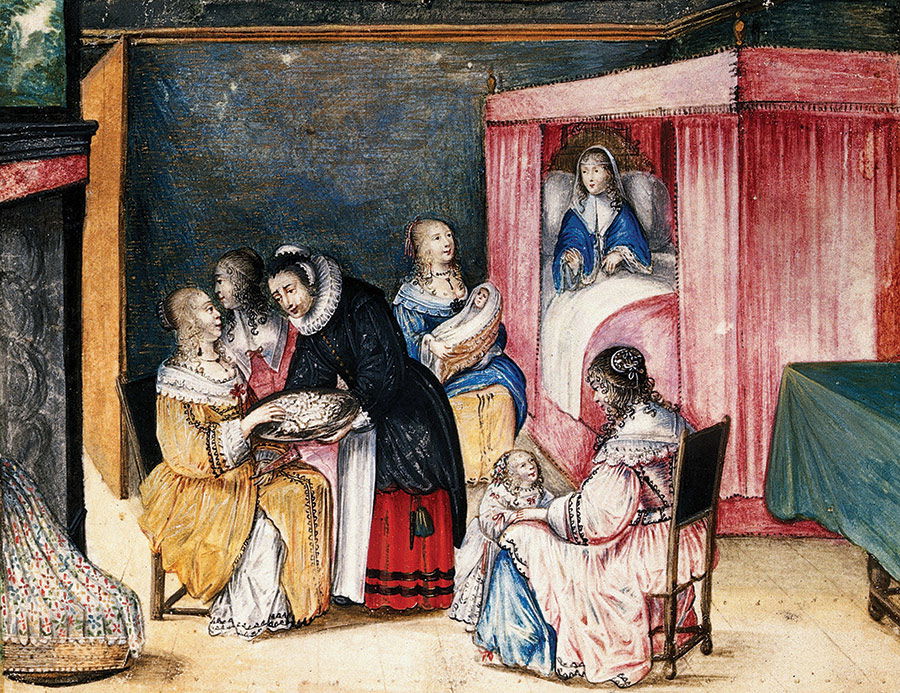Our Bodies, Ourselves
The propagation of humanity has been a bloody struggle for women.

This year we are marking the centenary of the Representation of the People Act, which extended suffrage to (some) women. As a result, there are many exhibitions and books rightly thinking about women’s achievements through history, as activists and social reformers, scientists, writers, artists, politicians, financiers, humanitarians, educators, inventors, actors and athletes.
One thing we tend to forget is just how miraculous it is that any woman – who also wanted to have sex as part of her life’s activities and who lived before the age of the pill – could achieve so much. There were, of course, other forms of contraception before the pill: rubber condoms date from the 1850s, but predating that your options were unaffordable (and unappetising) sheaths made of pigs’ intestines or bladder, or linen. Few people bothered.
Which means that married women were, on average, pregnant every other year of their wedded lives. Most women – especially the elites – inadvertently increased their fecundity by farming out the wet-nursing of their children to someone else, thereby losing out on the natural contraceptive benefits of breastfeeding. Bess of Hardwick was married to Sir William Cavendish for ten years in the 1550s: her first child, Frances, was born within ten months of the wedding and she then had children at almost yearly intervals, giving birth eight times, probably miscarrying once and watching two of her daughters die in infancy.
This means that most women who were neither very young nor very old were pregnant about half the time and were looking after young children or dealing with grief the rest of it.
As we know, the physical effects of pregnancy are not just that women swell up like beach balls. There is the sickness, tiredness and hormonal upsets of the first trimester: the clergyman Ralph Josselin noted in his diary in April 1645: ‘My wife divers days very ill; this day she began to persuade herself she was breeding.’ She was and later gave birth to a daughter. In September 1647 he wrote of another pregnancy: ‘My dear wife ill of this child: the Lord in mercy sanctify his dealing, and give her strength’ and, similarly, in January 1658: ‘My wife only very ill, but concludes it is childing … she is very sick in her stomach.’ Even the sympathetic Josselin thinks it only ‘childing’: women were (and are) sick, tired, isolated and miserable for months at a time and it is just business as normal. And that is before it becomes difficult to move.
Miscarriage was as common then as now (very); childbirth is painful enough now; imagine it before any form of anaesthesia existed. Think of the effects of repeated childbirth on a woman’s body. These women’s hormones and bodies never had a chance to normalise before they were pregnant again.
The dangers of maternal death – especially of puerperal sepsis (which carried off as many of Henry VIII’s wives as he beheaded) – were much greater than they are today. In February 1648 Josselin noted soberly: ‘In this week died in this town [Earls Colne, Essex] one woman in childbed and two children, or before her time she travailed and died; two young children more, and one young woman.’
Even if the mother survived, the child might not. Up to 300 in every 1,000 children died in their first 12 months. Two of the Josselin children died soon after birth. The vicar noted in his diary: ‘This day my dear babe Ralph quietly fell asleep, and is at rest with the Lord.’ Poor Alice Thornton, another 17th-century diarist, recorded between 1655 and 1667 the delivery and deaths of her third, fifth, sixth and ninth children. The first, Elizabeth, died at one year, six months and 21 days old. The third died on the day of his birth, while the latter two boys both died at 14 days old. How did women bear it? Grief affected mothers and fathers alike, but mothers also bore the physical pains: Alice Thornton wrote that after ‘my dear child’s death I fell into a great and long continued weakness’, because she had damaged her nipple suckling and it had become gangrenous and she was ‘extreme pained with torment of it’.
We do not think enough about this. We still live in a culture that prioritises men’s narratives and normalises men’s lives. Everything that women have achieved throughout history has been achieved in the context of this almighty, bloody struggle to continue the human race at the cost of their bodies and hearts. Let us remember that achievement, too.
Suzannah Lipscomb is Reader in Early Modern History at the University of Roehampton and author of The Voices of Nîmes: Women, Sex and Marriage in Early Modern Languedoc (Oxford, forthcoming).